The Corderie Royale Rochefort is a large museum located in the buildings of the former arsenal of Rochefort, on the banks of the Charente, not far from the historic center. This ship was used to produce ropes for the ships of the Royal Navy in France?
Corderie Royale Rochefort and Arsenal of the Seas – discover the extraordinary history of this emblematic place
What to visit at the Corderie Royale?
The Arsenal of the Seas has several spaces to visit, temporary and permanent exhibitions, often related to the maritime history and the rich past of the city of Rochefort.
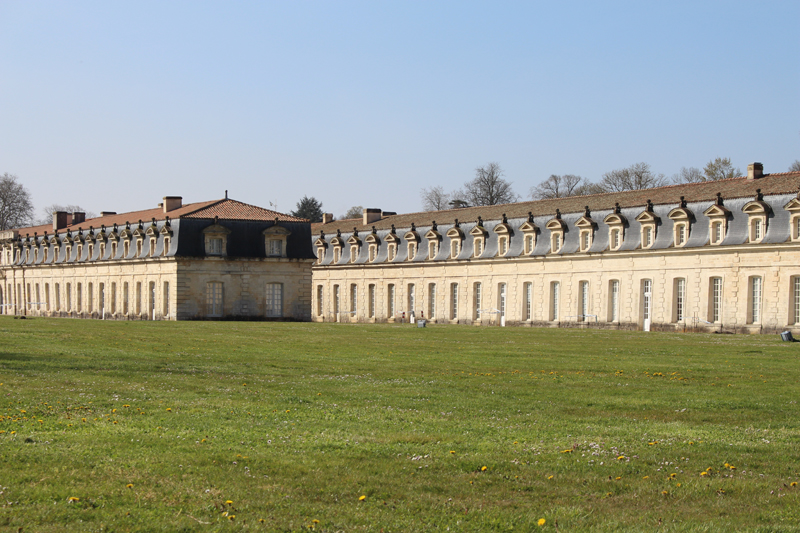
Corderie Royale Rochefort – Photograph of the façade of the main building
Corderie Royale Rochefort – How big is the building?
The rope factory is the largest building in the arsenal (374 metres long), which was used to make hemp ropes. The building dates from 1666 and is now worn out as a historical monument. It now houses several administrations.
How was the rope factory building built?
The location of the construction – near the Charente, on muddy ground – required the ground to be prepared by laying a foundation of oak grids, which made it a kind of ‘floating raft’. The construction lasted more than 3 years and mobilized more than 700 workers.

The foundations of the rope factory – an extraordinary work
Corderie Royale Rochefort – nowadays…
Today, the main building is occupied by the International Centre of the Sea, which benefits from a specialised library with more than 8000 references.
What happened to the buildings of the Royal Rope Factory in the twentieth century?
The buildings were almost completely destroyed during the Second World War, then work was undertaken from the 60s on the initiative of Rear Admiral Maurice Dupont. After its classification, it is the architect Michel Mastorakis who will supervise the rehabilitation of the buildings.
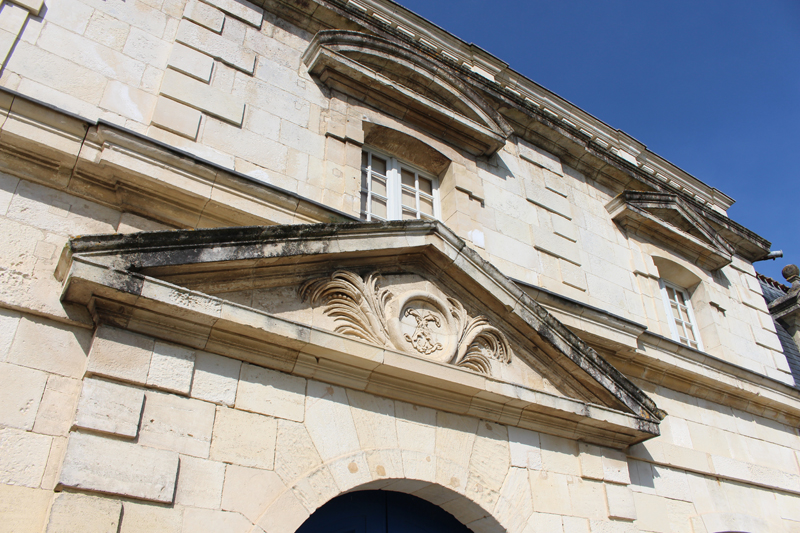
Corderie Royale Rochefort – Detail of the south façade of the main building
Can we visit the Rochefort rope factory?
You can visit the rope factory and discover the old rope factory, or even take part in the seamanship workshop to learn how to tie knots, and even make a bracelet or a key ring by tying marine knots.
Royal Rope Factory – the visit
The visit to the Royal Rope Factory of Rochefort is organized by the International Center of the Sea. The CIM is an association created in 1985.
The visit includes an audiovisual space, a permanent exhibition, and a temporary exhibition. You can also discover the rope shop, the bookshop, and the Longitudes restaurant.
During this visit, you will be led to discover the history of the royal rope factory built between 1666 and 1670 at the request of Louis XIV, but you will also be able to discover how the different stages of the creation of ropes: from the planting of hemp, to the different gestures and trades related to rope making.
Ropes – use
Ropes were used on sailing boats and they were used – the ‘ends’ for sailors – to moor a boat, to hoist or lower sails. Each naval arsenal had a rope factory, as for example in Brest or Cherbourg. It is the officers who command the rigging, to obtain the ropes necessary for maintenance and navigation.
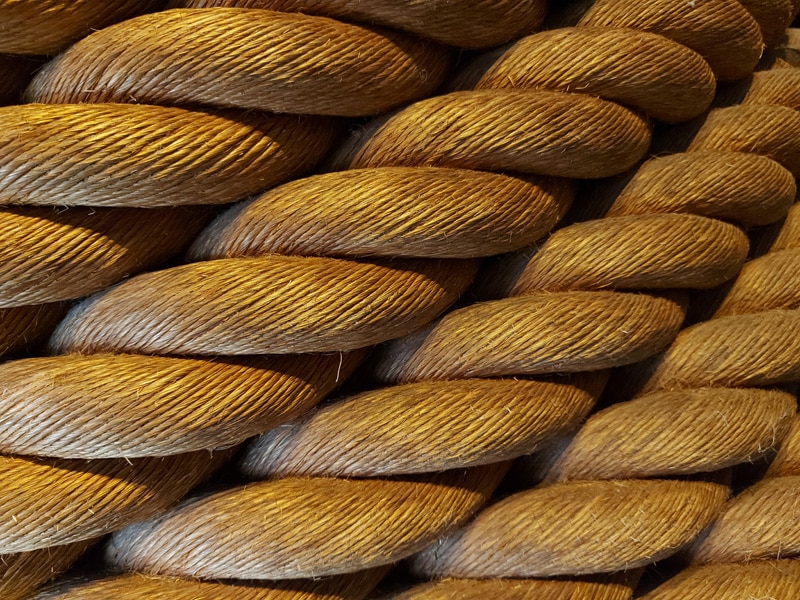
Example of rope presented at the permanent exhibition of the Corderie Royale
Hemp – the origin of ropes
It is hemp, mainly native to Asia, that is used to make ropes. The fibres of hemp are indeed very resistant. However, hemp mining requires several steps: It is necessary to soak the hemp in water for several days, to loosen the fibers from the stem, and then the fibers are dried and softened. Then comes espadage – cleaning of the fibres -, combing – use of combs or sérans – , and spinning, which makes it possible to obtain the caret thread, which is then stored on reels. The quality of the caret wire is essential to obtain a strong string.
Turning the caret thread into rope.
To do this, the rope makers use two tools: the construction site and the square. These two tools form a loom, which makes it possible to create strands that will then be twisted on top of each other to create a strong rope. To guide the strands during commettage, they use a toupin.
The different strings
A rope factory produces different types of ropes: hawsers, grelins, and smaller ones, wires. It is necessary to protect certain ropes, those that are permanently present on a ship. This is done by tarring the finished ropes, or the caret wires. The ropes are often tested by hooking a weight, or using the capstan. Later, the dynamometer will come.
The permanent exhibition also offers a presentation of the main marine knots, and the opportunity to try your hand at making marine knots, works created by sailors.
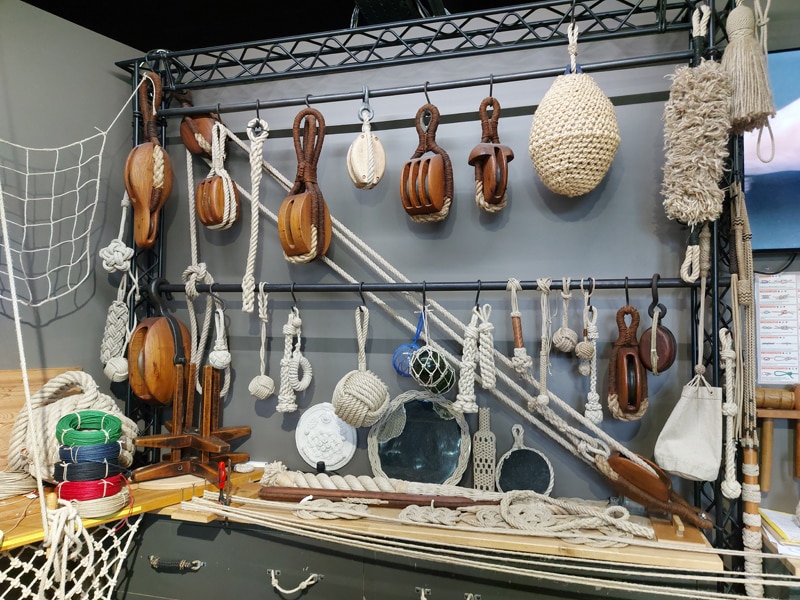
Presentation in the Seamanship Shop – permanent exhibition
What is the Arsenal of the Seas?
The Royal Rope Factory is part of a tourist site called the Arsenal of the Seas. This ensemble includes the Royal Rope Factory, the frigate Hermione, the National Maritime Museum, The Accro-mâts, Oceana Lumina – a course of lights, the naval medical school, etc…
The other sites of the Arsenal of the Seas
The frigate Hermione
The Hermione (the original) was a scout ship, lighter and more manoeuvrable than a warship, and was built at the end of the 18th century at Rochefort. The ship left Rochefort in 1780 to take part in the American War of Independence, with the Marquis de La Fayette on board and the Comte de Tréville, known as Latouche-Tréville, in command.
The visit allows you to discover the life-size replica of the frigate rebuilt from 1994 in Rochefort. Here you will learn about the life of the sailors of the Hermione at sea, listening to the boatswain, a member of the Hermione’s crew, who will guide you for the visit. You will also discover the history of the Hermione, its construction, the course of the manoeuvres, the cannons, etc… It takes 1h30 for the visit.
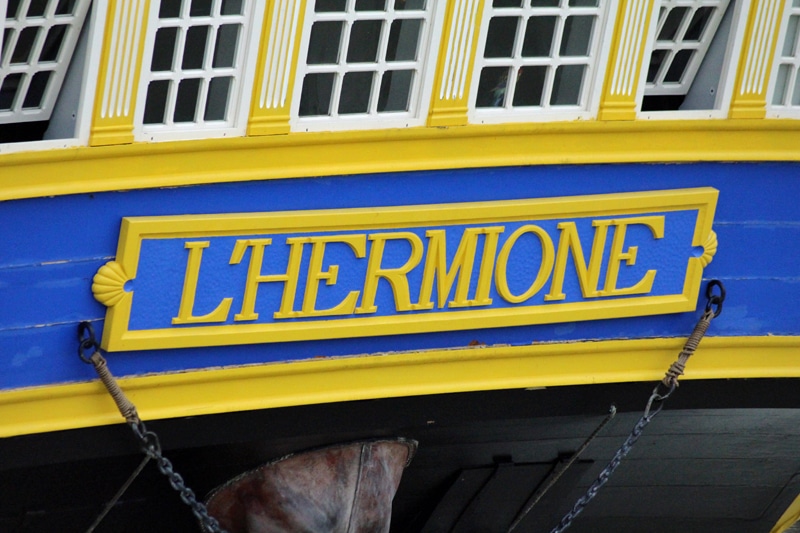
Frigate l’hermione – to visit near the Corderie Royale
The National Maritime Museum
A visit to the National Maritime Museum in the private mansion of the Lord of Cheusses allows you to discover the unique collection of various objects related to the history of the Navy: navigation instruments, weapons, paintings are numerous.
The Naval Medical School
You can visit the School of Naval Medicine, which has remained in the same state as it was in the 19th century. You can discover in 1h30 of visit the teaching rooms, the library, and even discover the different collections as well as the collections – ethnographic, anatomical, or botanical.
The mast climbing
The mast climbing course is a course similar to a tree climbing course located very close to the Hermione shipyard in the arsenal of the seas. The only difference lies in the aesthetics of the course, which makes you think that you are ‘flying’ from mast to mast on an old frigate, 30 m above the ground, with a view of the Charente and the Hermione.
Photos of The Royal Rope Factory in Rochefort
© More photos on france-fotostock.com
History of the Royal Rope Factory
History of the foundations of the rope factory
The history of the foundations of the Rochefort rope factory deserves to be known. Here is an excerpt from the testimony of Théodore Blois in Histoire de Rochefort:
The Royal Rope Factory is the first building to be built in Rochefort. It is terminated by two pavilions, and adorned with a third in the middle, it is one of the beautiful rope factories that was in the kingdom. It has two floors, 4 toises wide between the walls and one hundred and ninety toises long. The face is magnificent.
Nature of the land chosen
The land chosen for the construction of the corderie royale is not without its nature:
The place chosen by M. Blondel to establish this great mass was a beautiful meadow, about two hundred and fifty fathoms long, by a width of more than fifty at the narrowest, enclosed on one side by the river Charante, and on the other by a canal.
The first thing he did was to found the Terrain in several places. He found that under the first crust, which was about two feet of black earth and gason, there was a layer of clay very firm and solid at the top, ten or twelve feet thick, which gradually softened and ended in mud or mud soft and half liquid, of the same nature as that of the banks and bottom of the river; and this bad ground continued under the clay to such a great height, that he could never find the bottom, nor find any other ground underneath.
Technical challenges
His edifice must have been too large to serve it with the practice of the masons of the country, who in these situations put the first foundations of their buildings on the grass, without digging anything for their foundations, because two feet of good soil bound and strengthened by the roots of the grasses, are sufficient to support the mass of their buildings and prevent them from feeling the movements of the clay underneath, and this prudent architect not wishing to bind it to the clay to steer it, founded on the misfortune that had recently happened to the bridge of Saintes, which had been overthrown by the efforts of the clay, which in tormenting itself had driven away the pilings, and consequently caused the ruin of the bridge ; because the stale and tormented clay throws away, as it swells, all that has been put in and on it.
The course he found was to found a grid of framework in flat form, such as he had seen made on similar occasions in Holland and elsewhere, and particularly at the citadel of Havre de Grace, which M. d’Argencourt, on almost similar ground, had founded in this manner, as well as the work at Corne de Brouage.
History of the foundations … (continued)
Here is the rest of Théodore Blois’ testimony
M. Blondel, on the strength of these experiences, had the widths he wanted to give to the foundations of the walls traced on the ground, both of the outline of the rope factory and of the buildings that were to accompany it than of those which he had resolved to raise to the ground floor only, in the form of cross-beams, from four to four fathoms on the inside, to connect the principal walls with each other.
Scour
He had about five feet dug on the plane of the meadow, that is to say, three feet in the mass of clay, then having had the bottom of these excavations placed with great accuracy everywhere on the same level, he had a grid of long pieces of oak wood of 10 to 11 inches set up, assembled to each other, both solid and hollow and dovetailed throughout the extent of the foundations, that is to say, under the transom walls, as well as under the main walls, on which having spread in a flat form a flat bed of planks of the same wood, 3 or 4 inches thick, well seated on the same level, and well pegged on all the woods of the gate.
The construction of the royal rope factory
He had the first foundations laid down of the foundations made of beautiful quarters of libage, with long bowls, and the walls of good plumb masonry built on the inside and by recess outside, to the height of four and a half feet, or five feet above the plane of the meadow, on which he wanted that of the rope factory to be raised to this height, in order to extricate it from the inconveniences of the waters of the river, which sometimes overflowed, and especially at high tides, covered the greater part of the neighboring meadows.
He had the walls set up on this foundation, but with so much uniformity throughout its extent, that he never suffered a stone to be laid to begin a foundation, in any part of the circumference, that the course below was not entirely completed, so that the whole mass taking its weight equally everywhere, the ground under the gate was never more pressed on one side than on the other.
History of the foundations … (continued)
Here is the rest of Théodore Blois’ testimony
M. Blondel, on the strength of these experiences, had the widths he wanted to give to the foundations of the walls traced on the ground, both of the outline of the rope factory and of the buildings that were to accompany it than of those which he had resolved to raise to the ground floor only, in the form of cross-beams, from four to four fathoms on the inside, to connect the principal walls with each other.
Scour
He had about five feet dug on the plane of the meadow, that is to say, three feet in the mass of clay, then having had the bottom of these excavations placed with great accuracy everywhere on the same level, he had a grid of long pieces of oak wood of 10 to 11 inches set up, assembled to each other, both solid and hollow and dovetailed throughout the extent of the foundations, that is to say, under the transom walls, as well as under the main walls, on which having spread in a flat form a flat bed of planks of the same wood, 3 or 4 inches thick, well seated on the same level, and well pegged on all the woods of the gate.
Construction
He had the first foundations laid down of the foundations made of beautiful quarters of libage, with long bowls, and the walls of good plumb masonry built on the inside and by recess outside, to the height of four and a half feet, or five feet above the plane of the meadow, on which he wanted that of the rope factory to be raised to this height, in order to extricate it from the inconveniences of the waters of the river, which sometimes overflowed, and especially at high tides, covered the greater part of the neighboring meadows.
He had the walls set up on this foundation, but with so much uniformity throughout its extent, that he never suffered a stone to be laid to begin a foundation, in any part of the circumference, that the course below was not entirely completed, so that the whole mass taking its weight equally everywhere, the ground under the gate was never more pressed on one side than on the other.
To go further…
The International Sea Centre
The International Centre of the Sea in Rochefort, anchored in the former buildings of the Royal Naval Arsenal, offers visitors an immersive dive into the world of navigation, shipbuilding and maritime exploration.
Through a variety of interactive exhibits, historical re-enactments and remarkable collections, visitors can retrace the epic of the great explorers, discover the secrets of traditional shipbuilding, and learn about the contemporary challenges and issues of preserving the marine environment.
From visiting iconic vessels such as the frigate Hermione, famous for its role in the American Revolutionary War, to exploring the restored workshops and shipyards, the International Center of the Sea offers an enriching and captivating experience for maritime history buffs, families, and the curious of all ages.
In addition to its museum aspect, the centre also organizes cultural events, conferences and educational activities, helping to revive and preserve the region’s rich maritime heritage while raising public awareness of contemporary issues of the sea and ocean.
The Arsenal of the Seas
The Arsenal of the Seas in Rochefort embodies an incomparable naval heritage. Founded in the seventeenth century by Louis XIV, this arsenal was a pillar of French naval power, responsible for the construction, maintenance and supply of warships. Today, its vast historic facilities, including the Royal Rope Factory and the Hotel de Cheusses, have been beautifully restored to host captivating museums and interactive exhibits tracing the epic of the French Navy.
Visitors can immerse themselves in the fascinating world of shipbuilding through demonstrations of ancestral techniques, historical re-enactments and thematic exhibitions highlighting the crucial role of Rochefort in the country’s maritime history.
The Maritime Museum and the Hôtel de Cheusses
The Musée de la Marine and the Hôtel de Cheusses in Rochefort represent two essential pillars of France’s rich maritime heritage, offering a captivating immersion into the region’s naval history.
Located in the heart of the historic town of Rochefort in Charente-Maritime, these two sites bear witness to the past greatness of the French navy and its strategic importance. The Hôtel de Cheusses, a magnificent 17th-century building, now houses the Musée de la Marine, where visitors can explore remarkable collections of maritime artifacts, model ships, and historical artifacts, tracing the region’s maritime epic.
Interactive exhibits, audio-visual animations and demonstrations of shipbuilding techniques transport visitors through the centuries, allowing them to go behind the scenes of life aboard ships and understand the challenges that sailors faced.
As visitors walk through the halls of the Hôtel de Cheusses, they are immersed in the atmosphere of the sailing era, where adventure and exploration were at the heart of every sea voyage.
Rochefort or Rochefort-sur-mer is one of the main towns of Charente-Maritime known for its port, the corderie royale, and for some years now for the replica of the Hermione.
Discover the surroundings
The Abbey of the Ladies of Saintes
The Abbaye aux Dames in Saintes is a former abbey located in Saintes, in Charente Maritime, on the right bank of the Charente, not far from the Arch of Germanicus, and the Tourist Office.
The church of Royan
The Church of Notre Dame de Royan is located in Royan, in the Charente maritime region. It is a must-see because of its ellipse-shaped silhouette and measures 45 m in length.
Corderie Royale Rochefort – holiday rentals
Want to discover other tourist destinations in France? Discover the Loire Valley and its mythical castles



